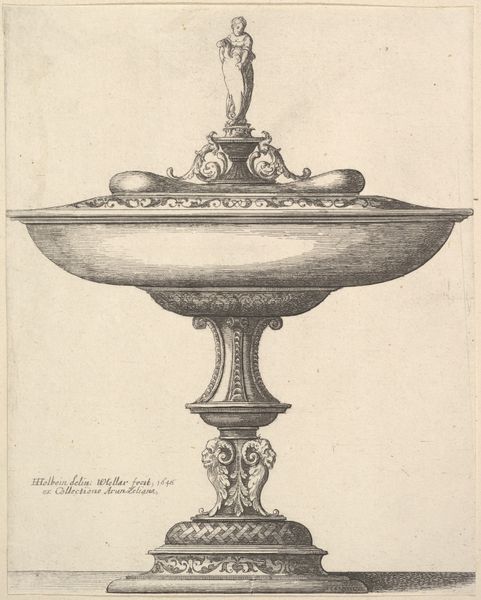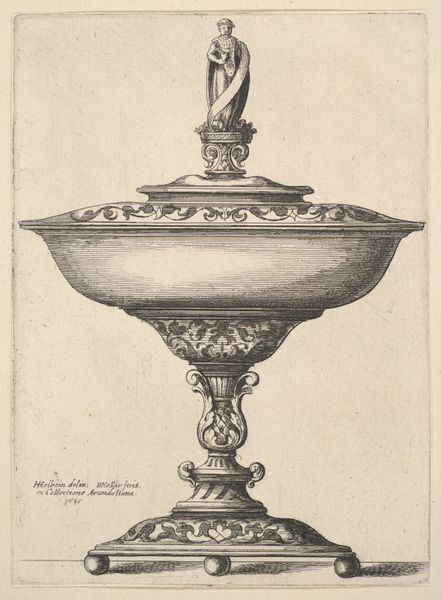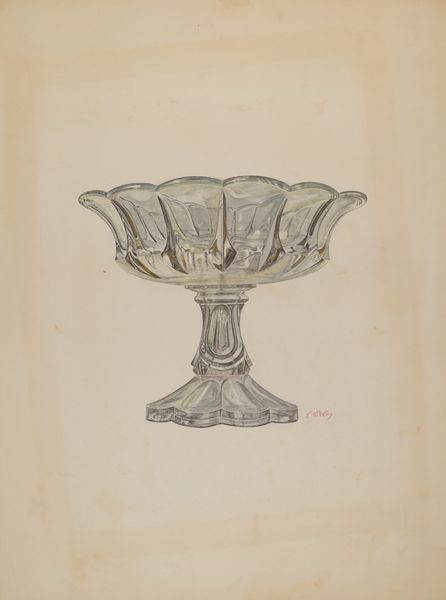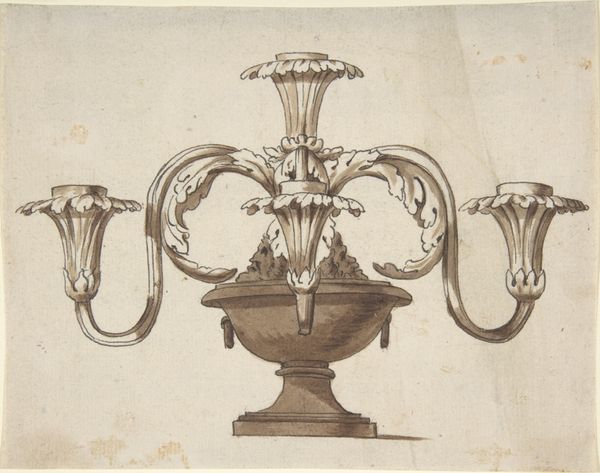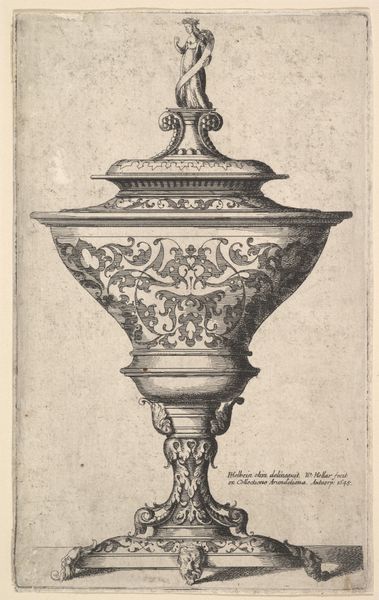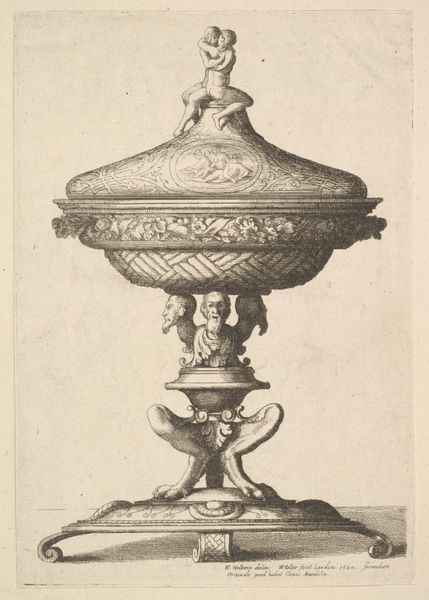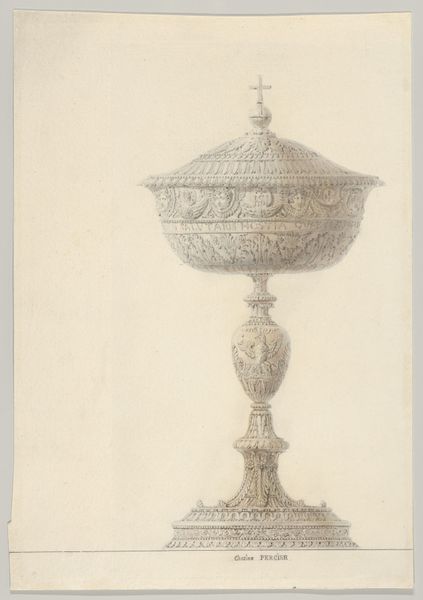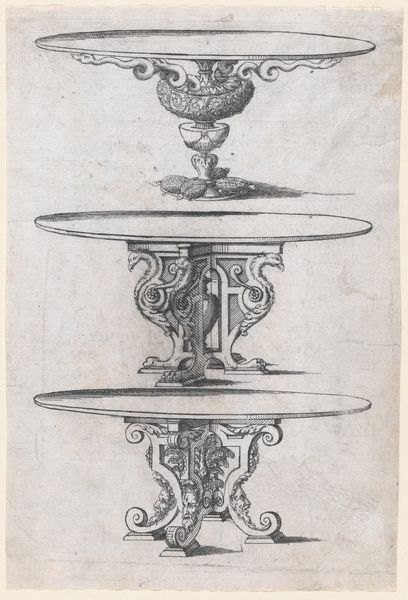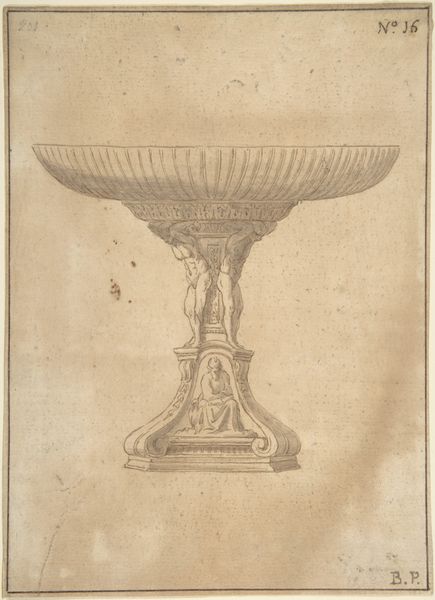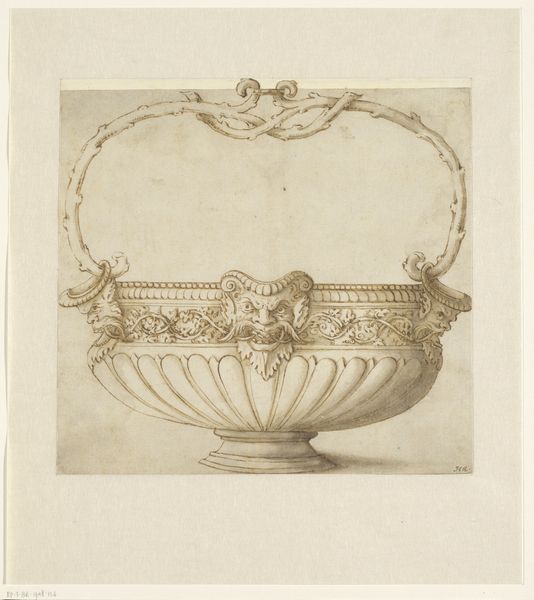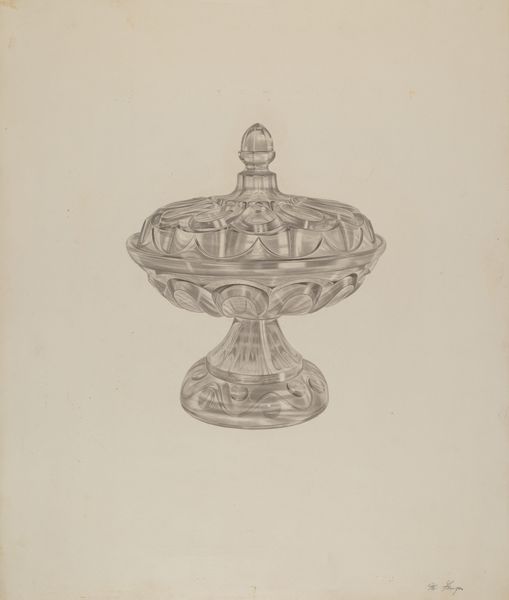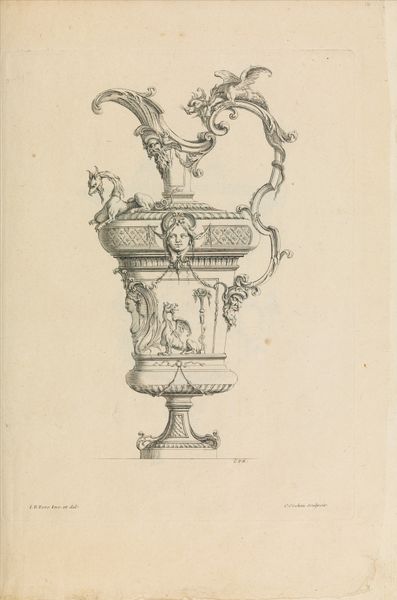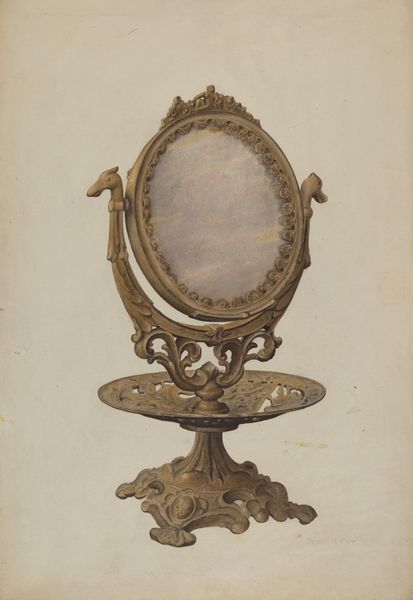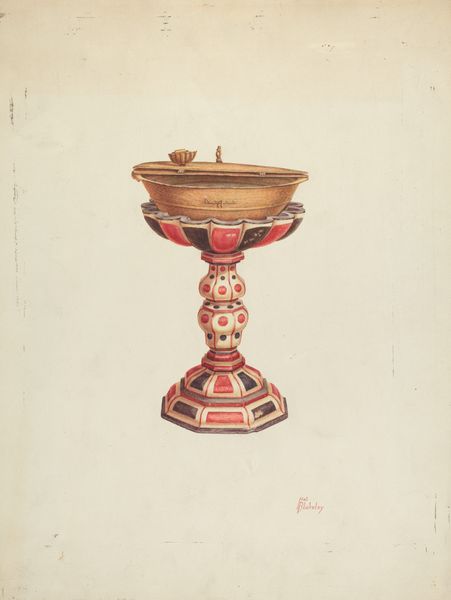
drawing, coloured-pencil, watercolor
#
drawing
#
coloured-pencil
#
water colours
#
watercolor
#
coloured pencil
#
watercolor
Dimensions: height 183 mm, width 231 mm
Copyright: Rijks Museum: Open Domain
This is Henri Cameré's design for a Romanesque-style bowl on a foot. The Romanesque style, popular from the late 10th century, was often commissioned by the church, reflecting its religious power and influence in society. Consider the era's hierarchical structure, where artistic expression was often dictated by those in positions of power. Cameré’s bowl design is full of embellishments with gold and precious stones; such riches would have only been accessible to certain classes. Who was this bowl designed for? How would it be used, and on what occasions? Also, think about the labor required to produce such a piece. The design points towards the exploitation of labor, where artisans and craftspeople were often anonymous figures, their individual identities subsumed by the demands of their patrons. Reflect on how the bowl, as a symbol of wealth and status, might evoke complex emotions about inequality. How does it confront us with the realities of power, privilege, and the human cost of artistic production?
Comments
No comments
Be the first to comment and join the conversation on the ultimate creative platform.
